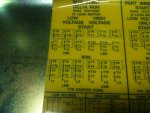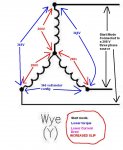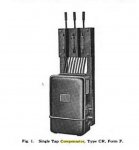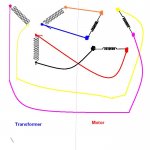- Location
- Windsor, CO NEC: 2023
- Occupation
- Hospital Master Electrician
Help me out, motors are not my strong suit. How would I use this information?
This label in inside the cover of a 60 HP, 200V fire pump motor. There was another diagram on the housing of the motor that I went by before I noticed this label inside the cover. The motor is connected to a VFD.
I just don't understand why I have two diagrams for the same voltage. Are there starters that have different run and start terminals that would make use of this?
I recognize that this is a dumb question for those of you who know the answer.
This label in inside the cover of a 60 HP, 200V fire pump motor. There was another diagram on the housing of the motor that I went by before I noticed this label inside the cover. The motor is connected to a VFD.
I just don't understand why I have two diagrams for the same voltage. Are there starters that have different run and start terminals that would make use of this?
I recognize that this is a dumb question for those of you who know the answer.








